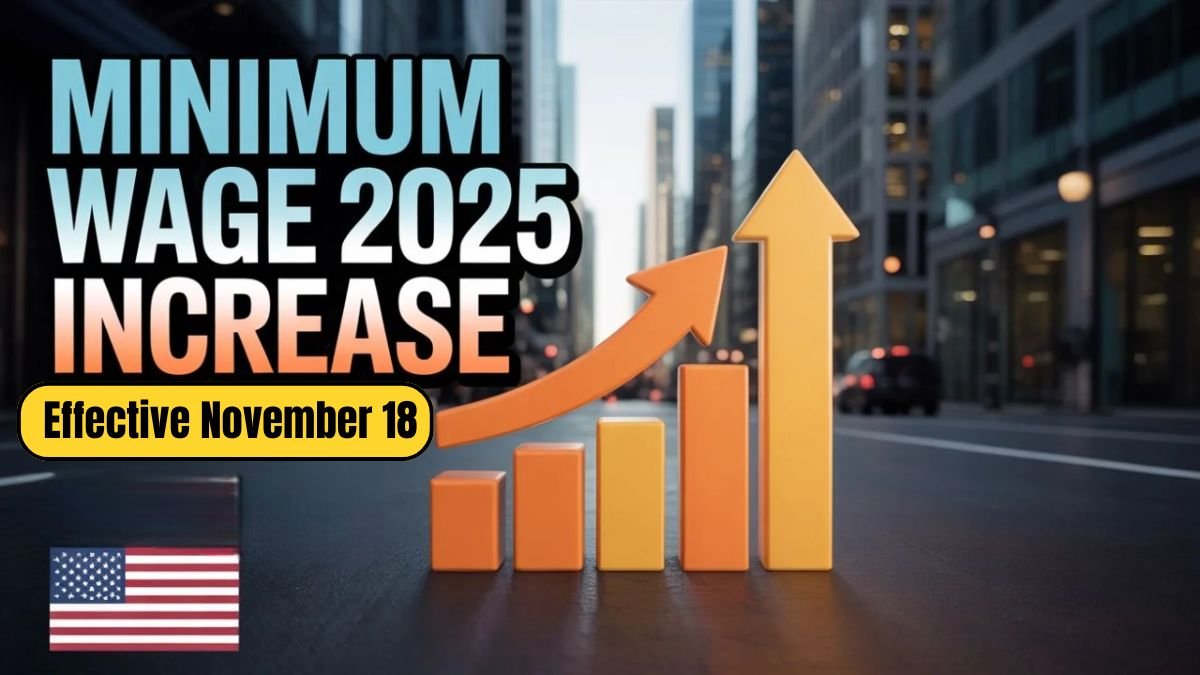Wage and salary policy in the United States directly impacts the lives of millions of American workers every year. The US government has announced a significant increase in the minimum wage in 2025. These new rates will take effect on November 18, 2025, and will benefit millions of American workers. In this article, we will explain in detail the new wage rates, who will be affected, the sectors in which the changes will occur, and other important information.
What is the Minimum Wage and Its Importance?
The minimum wage is the minimum amount legally mandated to be paid to an employee for their work. It not only helps maintain employees’ standard of living but also contributes to reducing income inequality and increasing economic stability.
In the United States, the federal minimum wage may change annually, but state governments also set different rates. Therefore, an employee’s actual minimum wage depends on both federal and state regulations.
Historical Context of the 2025 Minimum Wage Increase
The minimum wage in the United States is reviewed periodically. This 2025 increase is considered the largest increase for workers in years.
For the past few years, the federal minimum wage was $7.25 per hour. This rate remained unchanged for a long time. The 2025 increase is aimed at keeping pace with the rising cost of living for workers.
New Minimum Wage Rates for 2025
On November 18, 2025, the minimum wage rates in the United States will be as follows:
Federal Minimum Wage: $12.00 per hour
State Rates:
- California: $16.50 per hour
- New York: $15.50 per hour
- Florida: $14.00 per hour
- Texas: $12.00 per hour (as per federal rate)
This increase is a significant change to the minimum wage rates applicable at the federal and state levels.
Note: State governments can set their own minimum wage higher than the federal rate. Therefore, the new rates may vary for each state.
Who will benefit?
The minimum wage increase will primarily benefit the following workers:
- Employees in the hospitality and restaurant industry—waiters, chefs, housekeeping staff
- Retail sector employees—shop employees, cashiers
- Home healthcare workers—employees caring for the elderly and patients
- Employees employed in small businesses—those working in small startups and private companies
This increase will significantly increase the monthly and annual incomes of millions of American workers.
Economic Impact of the New Minimum Wage Increase
Benefits for Employees
- Improvement in the quality of life of employees
- Help in coping with rising inflation and daily expenses
- Possibly impacting the education and health of families and children
Impact on Businesses
- Costs for small businesses may increase as they will have to pay employees higher wages.
- Possibility of improved employee satisfaction and productivity
- Possibility of a slight increase in prices in some sectors
Minimum Wage Increase and Inflation
Inflation rates in the United States are steadily rising. Rising inflation has impacted the real income of employees. Therefore, this increase in the minimum wage will help employees meet their expenses According to experts, the federal rate of $12 per hour and higher state rates will strengthen employees’ purchasing power
Tips for Employees
Check your new payslip: Ensure the new rate is reflected on your payslip after November 18th.
Accurately record hours worked: Ensure hourly wages are correctly recorded.
Seek legal help: If your employer does not implement the new rate, contact the Department of Labor.
Preparation for Small Businesses
Small businesses should prepare for this increase in advance by:
- Reevaluating employee pay packages
- Changes to budgets and expenses
- Informing employees about the new policy
State and Local Minimum Wages
Some states and cities have already set rates higher than the federal minimum wage.
- San Francisco: $18.00 per hour
- Washington, DC: $17.50 per hour
- New Jersey: $15.75 per hour
Employees in these areas will receive the new higher rate starting November 18th.
Conclusion
The 2025 minimum wage increase in the United States is a positive step for workers. It will not only help improve living standards but also contribute to reducing economic inequality. Both employees and businesses must prepare for this new policy The new minimum wage rates, which will take effect on November 18th, 2025, will be a major financial benefit to millions of American workers.
FAQs
Q1. What is the new U.S. minimum wage for 2025?
A. The new federal minimum wage will be $12.00 per hour, with some states having higher rates.
Q2. When will the new hourly pay rates take effect?
A. The updated minimum wage rates will take effect on November 18, 2025.
Q3. Who will benefit from the minimum wage increase?
A. Employees earning minimum wage in the U.S., including retail, hospitality, and service industry workers, will benefit.

